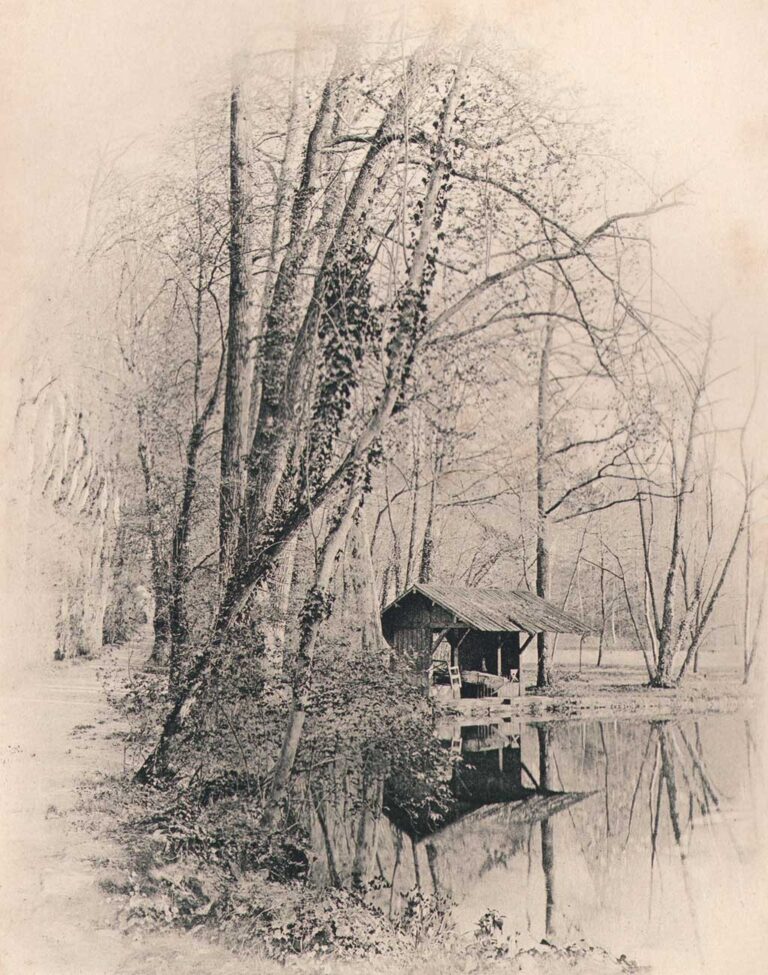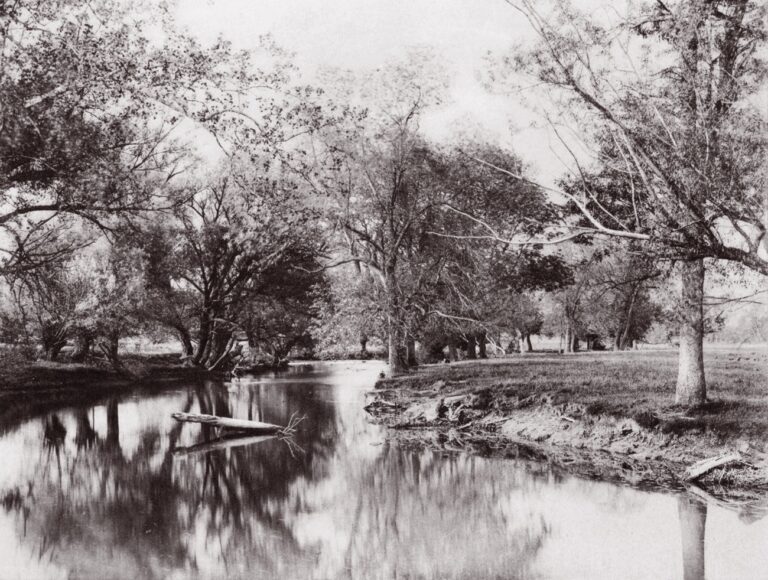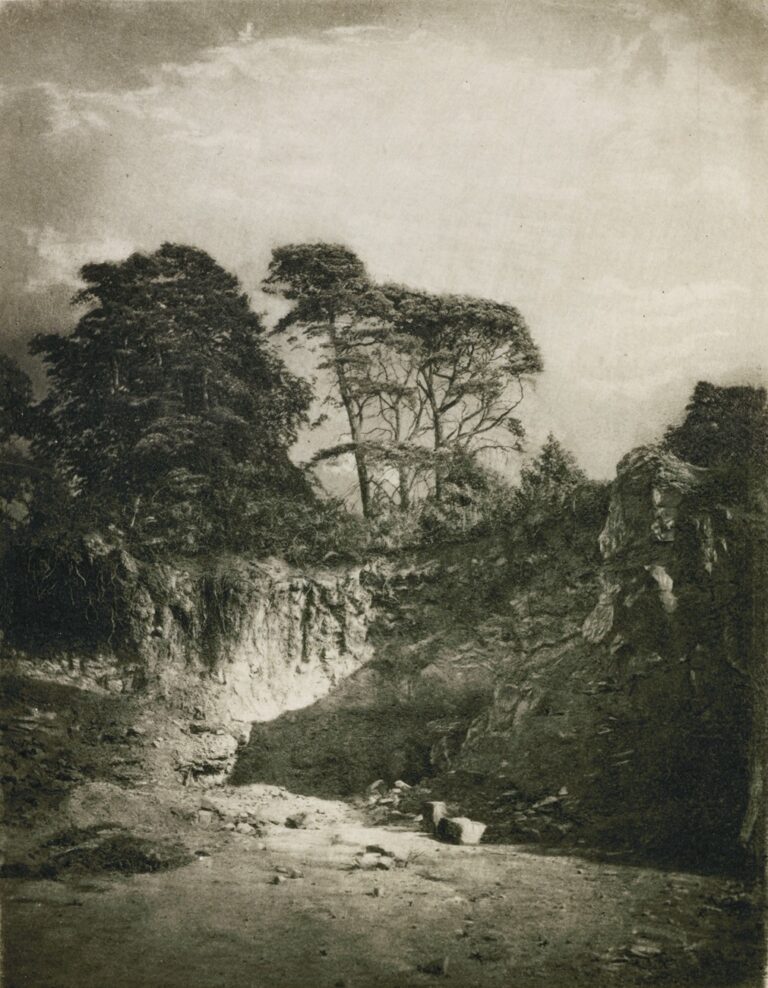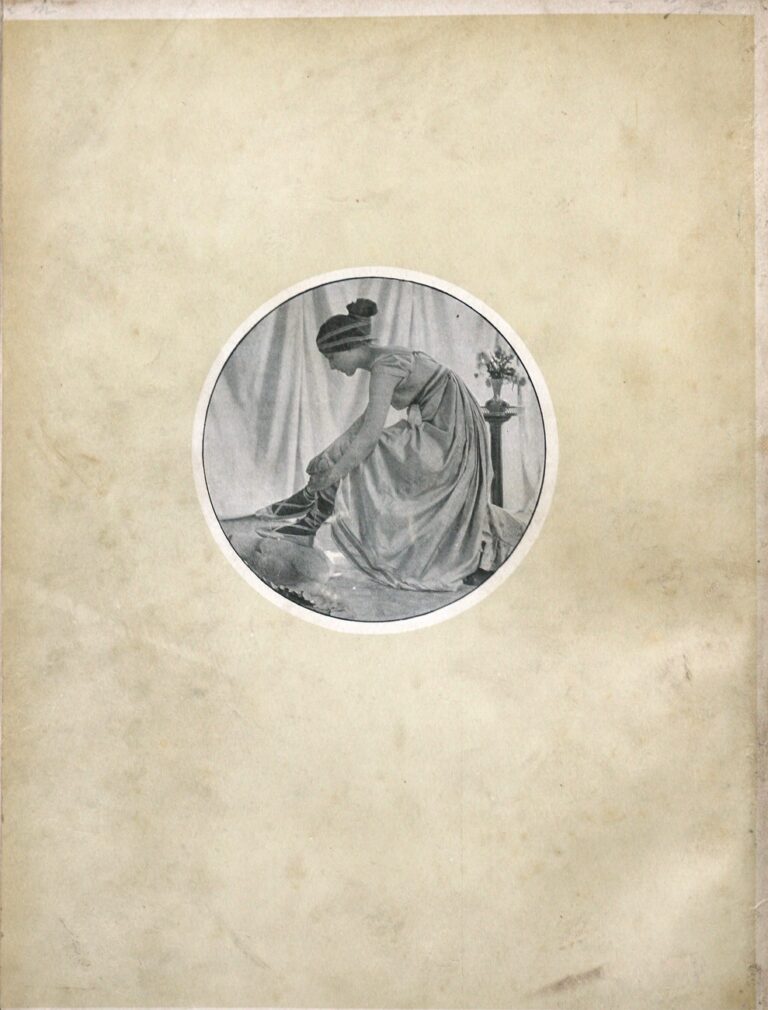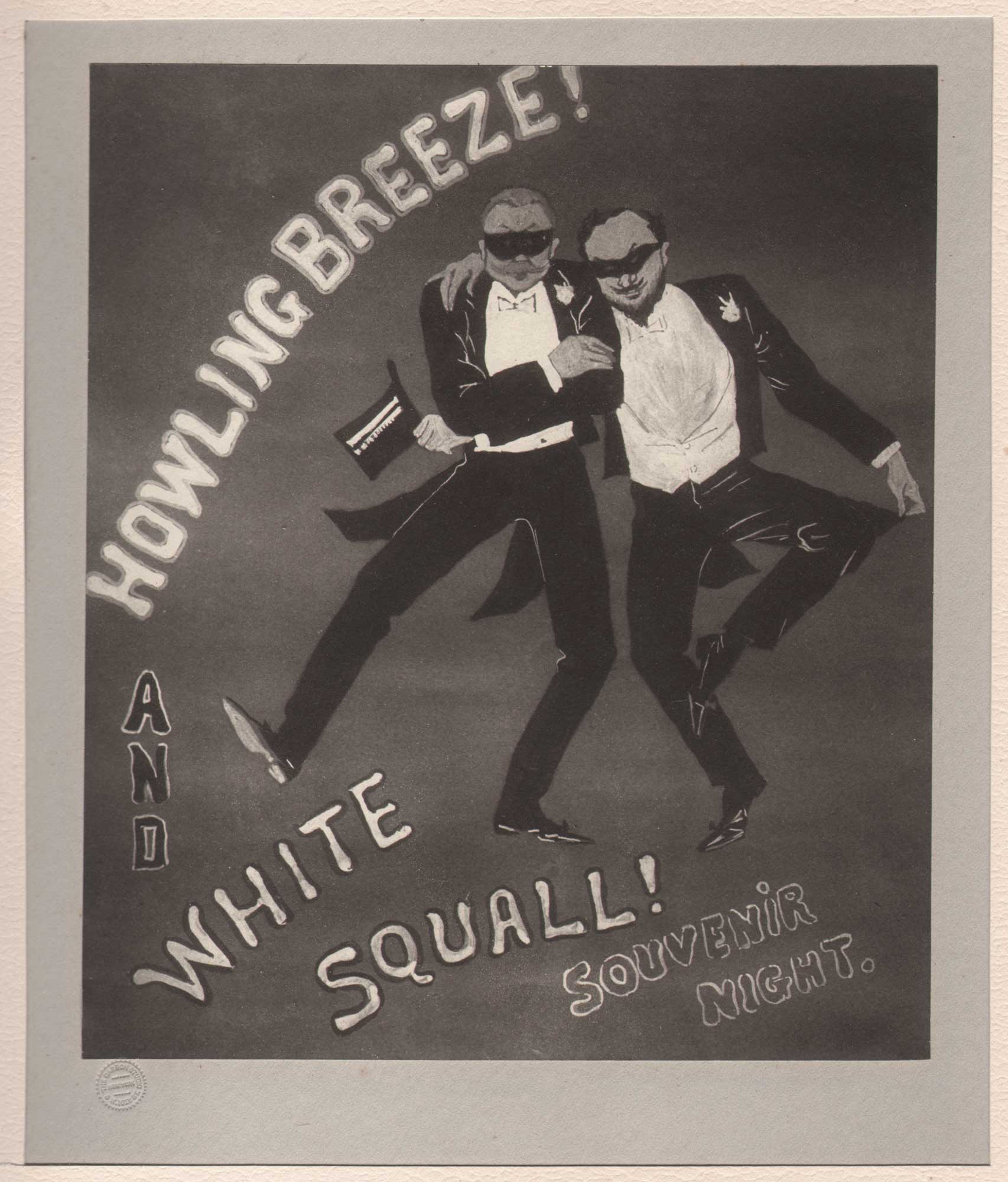
Howling Breeze! and White Squall! Souvenir Night
With the subjects masked and wearing tuxedos and tales, this poster drawing by an unknown artist depicts photographer James Lawrence Breese at right: Howling Breeze! dancing with his good friend Stanford White: White Squall! The plate was included in the commemorative 1897 portfolio Souvenir of “One of the 1001 Nights” for a costume party held at the photographer’s Carbon Studio and townhouse in New York City on December 17, 1896.
Stanford White (November 9, 1853 – June 25, 1906) was an American architect and a partner in the architectural firm McKim, Mead & White, one of the most significant Beaux-Arts firms at the turn of the 20th century. White designed many houses for the wealthy, in addition to numerous civic, institutional and religious buildings. His temporary Washington Square Arch was so popular that he was commissioned to design a permanent one. White’s design principles embodied the “American Renaissance”.
In 1906, White was murdered during a musical performance at the rooftop theatre of Madison Square Garden. His killer, Harry Kendall Thaw, was a wealthy but mentally unstable heir of a coal and railroad fortune who had become obsessed by White’s alleged drugging and rape of, and subsequent relationship with, the woman who was to become Thaw’s wife, Evelyn Nesbit, which had started when she was aged 16. At the time of White’s killing, Nesbit was a famous fashion model. With the public nature of the killing and elements of a sex scandal among the wealthy, the resulting trial of Thaw was dubbed the “Trial of the Century” by contemporary reporters. Thaw was ultimately found not guilty by reason of insanity. – Wikipedia (2025) continues…
James Lawrence Breese: 1854-1934
James Lawrence Breese, a stockbroker by profession, owned and operated The Carbon Studio, located on the ground floor of his townhouse at 5 West 16th street in New York City in partnership with American photographer Rudolf Eickemeyer Jr. Breese, a member of New York Society himself, specialized in Society portraiture as well as the copying of artwork.
The following biography of Breese is courtesy of his great great grandson Mark Sink, a noted American photographer based in Denver, CO. Mark maintains a blog on Breese and extended family here.
James L. Breese and the Carbon Studio NYC
He was James L. Breese, best friend of architect Stanford White who did design work for both his New York townhouse and studio at 5 West 16th street and his Southampton country estate (both still standing). He was the nephew of the portrait artist, inventor of the telegraph and co-founder of the National Academy of Design, Samuel Finley Breese Morse (aka “The father of American Photography”). He was a leading light in New York’s turn-of-the-century social and artistic upper crust. James L. Breese owned and operated the Carbon Studio in partnership with pictorialist Rudolf Eickemeyer Jr., who later became a member of Alfred Stieglitz’s The Photo Secession and The Linked Ring. Breese’s then famous “One of 1001 Nights” salons would begin at midnight, at 5 West 16th, “at the foot of women’s mile.”Artists, writers and society secretly gathered for lascivious intrigue. The documented and published highlights were dresses catching fire to be extinguished with champagne, “The Pie Girl Dinner”, a naked sixteen year old girl to popping out of a pie, and “the girl in the red velvet swing.” His circle of bohemian friends and guests included such remarkable personalities as Miss Emily Hoffman, the mother of Diana Vreeland, (Charles) Dana Gibson, Louis Saint Gaudens, John Singer Sargent, Nicola Tesla, Otho Cushing, Miss Post, the Parsons, the DeForests, Evelyn Nesbit and many more. Together they staged elaborate historical party tableaux which Breese photographed for his private amusement. He was the founder and an active member of the NY Camera Club, won many awards, and was cataloged in Camera Notes many times. He and Stieglitz were the only two Americans (out of sixty American applicants) to be accepted in an exhibition in Vienna 1893, (1891-editor) which Breese took first prize. He wrote and illustrated articles for Cosmopolitan (1894), one titled The Relationship Of Photography To Art. He was heavily chronicled and his exhibitions reviewed during his day. The most noted was by critic Edward L. Wilson, who wrote of Breese and his work, “true and interesting picture qualities” and, “the leader of New York’s new school.” Another review by Sadakichi Hartman gushes about Breese and pans Steiglitz. Like so many of his contemporaries very little is known about him today. The well known historians, William Welling, Christian A. Peterson and the director of the National Portrait Gallery, Mary Panzer, have all made generous entries about Breese in their historical texts and publications of the period and they all agree there is much more to be unearthed and brought to light about this bohemian group that called themselves “The Carbonites”.
✻ ✻ ✻ ✻ ✻
One of perhaps only 50-70 copies produced, with almost all believed to be either lost or destroyed, this rare mammoth album of original carbon photographs, including of artwork produced by notable artists and an original multi-color lithograph, was compiled by amateur photographer James Lawrence Breese in early 1897. An important and historical photographic and artistic record of America’s Gilded Age, it was produced as a lavish “souvenir” album of a gathering of 70 invitees of the New York City elite, including members of The Four Hundred. The occasion was a costume party at the photographer’s “Carbon Studio” and townhouse at midnight on December 17, 1896.
The album contains ten carbon prints, laid down on oversized cards and individually matted, all with Breese’s “The Carbon Studio” blindstamp, and an original lithograph of the party’s “menu” printed in colors by American artist Robert Lewis Reid. (1862-1929)
